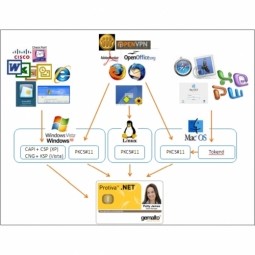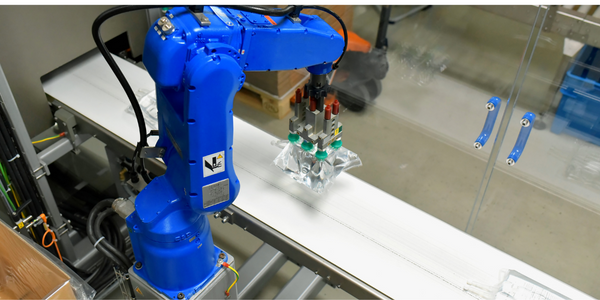Download PDF
Red Hat's Implementation of Brandfolder Content Automation for Enhanced Brand Governance and Cost Reduction
Technology Category
- Platform as a Service (PaaS) - Application Development Platforms
Applicable Industries
- Life Sciences
Applicable Functions
- Maintenance
- Sales & Marketing
Use Cases
- Leasing Finance Automation
- Material Handling Automation
Services
- System Integration
- Training
The Challenge
Red Hat, a leading provider of open source, enterprise IT solutions, was facing a significant challenge due to its exponential growth in the Asia-Pacific region. The company was investing substantial resources into producing and distributing marketing material, a process that was proving to be time-consuming, repetitive, and costly. This was overloading the brand and marketing teams and leading to inconsistent execution of the corporate brand. The quality of ad-hoc marketing materials produced by external vendors was poor, which further affected the brand's image. The company was also struggling with brand governance, especially as the production and distribution process in the region was leading to a gradual dilution of the Red Hat brand. Managing the brand on a global scale across several countries and languages, while catering to local marketing needs, was proving to be a complex task.
About The Customer
Red Hat is a global leader in providing open source, enterprise IT solutions. The company has a presence in 35 countries with 85 offices and employs over 11,000 people worldwide. Red Hat offers a range of services including operating system platforms, middleware, applications, management products, support, training, and consulting services. The company is known for its commitment to innovation and has made significant exports in the technology sector.
The Solution
Red Hat implemented Brandfolder Content Automation to address these challenges. The solution involved creating templates by in-house designers that could be instantly shared with marketing and production teams across the globe. This allowed for the production of localized materials on demand, in multiple output formats such as pdf, png, jpg, or HTML. The solution also offered dynamic customization capabilities and automatic resizing, eliminating the need for manual versioning of creative content and significantly lowering Red Hat’s production costs. Brandfolder Content Automation empowered Red Hat's field marketing teams and agencies to write and edit content, customize it to different regions and markets, and render their own marketing materials without any branding concerns or bottlenecks.
Operational Impact
Quantitative Benefit
Related Case Studies.

Case Study
Corporate Identity Solution Adds Convenience to Beckman Coulter
Beckman Coulter wanted to implement a single factor solution for physical and remote logical access to corporate network. Bechman Coulter's users were carrying smart card badges for doors, but also needed a one-time password token to access to our corporate network when they were not in the office. They wanted to simplify the process.

Case Study
Embracing Business Success in Real Time
· Increase control over growing Big Data to improve business decisions · Manage data for 28,000 biotechnology stockkeeping units in the fields of microbiology, molecular biology, animal cell cultures, plant tissue cultures, and lab ware for laboratory chemicals · Accelerate report generation and analysis with real-time data

Case Study
Flow Robotics: Scaling Up Production and Accelerating Product Development with IoT
Flow Robotics, a Danish manufacturer, developed flowbot™ ONE pipetting robots to alleviate the strain on bioanalysts in life-science laboratories and hospitals across Europe. These robots were designed to automate part of the testing process, speeding up the time it takes to produce results and reducing pressure on staff. However, the company faced challenges in scaling up production and accelerating product development. High workloads and physically challenging conditions have long been an issue for laboratory professionals. Flow Robotics estimates that around half of medical lab technicians carry out the same arm movements for at least a quarter of their working day. The American Society for Clinical Pathology reported that 85% of laboratory professionals feel burnt out; 36% struggle with inadequate staffing; and 32% face a heavy workload and pressure to complete all testing on time.

Case Study
Revolutionizing Aerospace Industry with 3D Printing: A 63% Lighter Titanium Part
GE Aviation, a renowned name in the aerospace industry, recognized the potential of 3D printing technology in transforming the sector. The primary challenge was to reduce the weight of the aerospace parts, which would directly impact the fuel costs. A lighter airplane would mean lower fuel consumption, leading to cost savings and a smaller carbon footprint. However, achieving this weight reduction without compromising the strength and functionality of the parts was a significant challenge. Traditional manufacturing methods were not able to provide the desired weight reduction while maintaining the required stiffness and strength of the parts. The challenge was to find a solution that could create strong, light, and functional aerospace parts.
Case Study
Material Intelligence at Ethicon: Sustaining Medical Device Manufacturability and Improving Patient Care
Ethicon, a world-class medical devices company, faced several challenges in its operations. The rapid selection of manufacturing materials compliant in global markets was critical to assure patients, practitioners, and purchasing organizations of the biocompatibility of their medical devices. Ensuring supply chain continuity and minimizing risks of obsolescence for medical devices due to regulatory changes were also crucial in meeting Ethicon’s ongoing commitment to maintaining patient care. Furthermore, the engineers at Ethicon were developing the next generation of medical devices and needed to access historical material data to accelerate new product development. The process of centralizing and digitalizing its materials information was a significant challenge that Ethicon needed to overcome.
Case Study
IWT's Transformation: Customizing with Efficiency in IoT
IWT, a company specializing in the design, manufacture, and installation of washing systems for the life sciences and pharmaceutical industries, faced a significant challenge in managing its wide product portfolio. The company manufactures 45 different models, 60% of which are customized to some degree. This high level of customization, combined with limited production quantities, necessitated a controlled process for managing the release of engineering changes. The goal was to achieve efficiency, reduce process time, and better coordinate production throughout the organization. The need for strict compliance in heavily regulated industries further complicated the situation. IWT's existing PLM journey with Dassault Systèmes’ SOLIDWORKS for 3D CAD and Enovia for managing CAD data and Bills of Materials (BOMs) was proving inadequate. The system had limited part classification, no workflow, and no tool to ensure data consistency. The management of non-CAD documents was also a challenge, with information often difficult to find and access.





